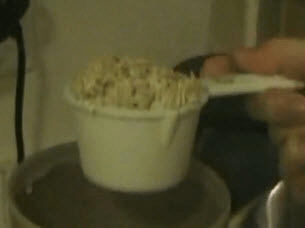The reason you’re unhappy with your marketing results is the same reason that more than 30 percent of Americans are obese—guesstimating. Think about the number of people who accurately count the calories they eat and/or weigh their food. It’s probably a fraction of a percent, wouldn’t you say?
Sadly, I’ll bet that there are more people who weigh their food and/or count calories than there are business owners who accurately track their advertising. Like counting calories and weighing food, there’s a (mis)perception that the headache and cost required to get accurate data exceeds the benefit. Unfortunately, nothing could be further from the truth.
In this blog post, I’m going to give you a few examples of how guesstimates can absolutely destroy your marketing ROI and your waistline.
Some of you know, from my previous blog post and my social media updates, that I’m on a bit of a post-New Years weight loss campaign. I used to be a semi-professional cyclist until I was sidelined by an unexpected injury. Unable to ride or workout, I found it incredibly difficult to go from eating 4,000-6,000 calories a day (the amount required to fuel my training) to 1,800-2,000 calories (the amount required to maintain my weight while sitting behind a desk all day).
The truth is, I didn’t really even try. Instead of using data, I relied on guesstimates. When I was cycling, I could get away with it because I was burning such a huge number of calories training 3-5 hours a day (although, now that I think about it, keeping track of my food intake more accurately would have helped me win more bike races too).
Here’s a great example of how guesstimates can destroy your waistline.
How often have you poured yourself a bowl of cereal or oatmeal and figured that whatever you poured is probably about one serving? Almost no one uses a measuring cup to control their portions, and those who do scoop something that looks a lot like this:

One serving of rolled oats is supposed to be 40 grams and 150 calories. The scoop seen in the image above is actually 57 grams and 214 calories! Some of you are probably saying BFD. Well, tracked over the course of a year, seemingly small over-estimates like this add up to a big fat gut.
If you’re supposed to eat 2,000 calories a day to maintain your current weight and you make two small errors like this a day, after just a year, you’d be 13 lbs heavier. And let’s be real honest, most people make WAY more serious mistaken calculations than this one.
The same danger exists when you use guesstimates to manage your business.
For example, should you invest in online marketing to increase website traffic or implement some tests to improve your website’s conversion rates? In my experience, most business owners opt to invest in marketing. Why? Because they guesstimate their website conversion rates instead of accurately tracking them. The trouble with their napkin math is that it’s typically far from accurate.
I met the owner of a residential HVAC company who planned to about double his PPC and SEO budget because he was unhappy with the quantity of leads he was receiving. Little did he realize that his website was converting less than 5 percent of his visitors into leads. A typical residential HVAC website should have a visit-to-lead conversion rate greater than 10 percent. His decision to invest in traffic (over conversion rate optimization) was purely based on a guesstimate and, had he moved forward, it would have been an enormous waste of money.
A replacement window company told me that their lead-to-sale conversion rate was 40 percent. Guess what it actually was (after we implemented a CRM and accurate tracking)? 24 percent!
Now, think about the advertising and marketing mistakes that can come from a guesstimate like this.
If their typical residential window replacement job is $5,000 and their gross margin is 40 percent, it’s conceivable that, after sales commissions are paid, they’d be willing to pay $750 to acquire a sale.
With a guesstimated lead-to-sale conversion rate of 40 percent, their perception might be that they could afford to pay $300 per lead. But if their actual lead-to-sale conversion rate is only 24 percent, they really shouldn’t be paying more than $180 per lead. Big difference.
This incorrect guesstimate, applied to all their advertising and marketing decisions, has “fast track to financial ruin” stamped all over it.
Don’t guesstimate. Your spouse AND your shareholders will thank you.











